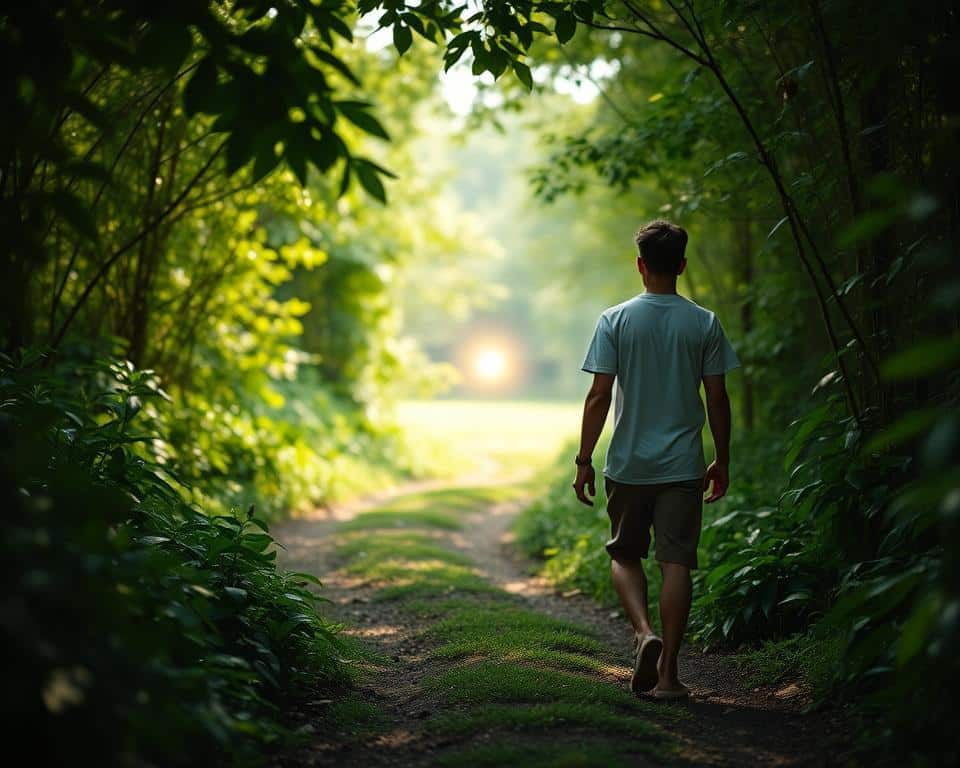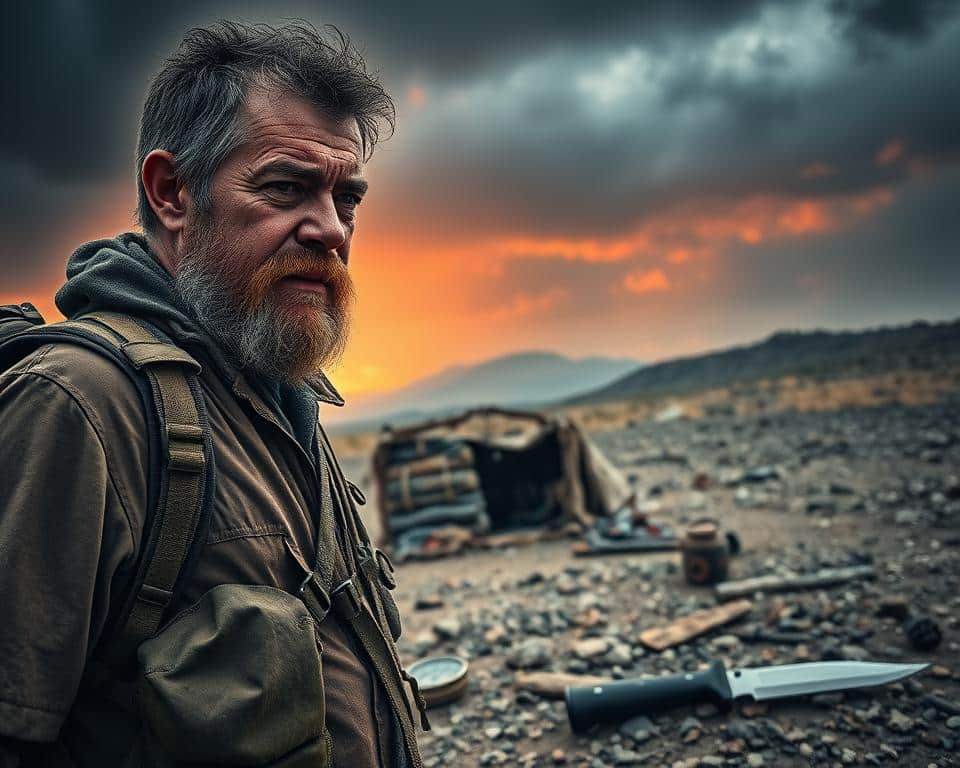“Faith is taking the first step even when you don’t see the whole staircase.” — Martin Luther King Jr.
I write this guide to share the good news that Scripture gives us hope in hard times. 1 John 5:4 tells us faith overcomes the world, and 2 Timothy 1:7 promises a sound mind instead of fear.
I will blend God’s words with practical prepping and disaster preparedness. You will find clear steps on gathering information and knowledge, securing water and food, and readying first aid and equipment.
My aim is to move from faith to action. I explain how to set a place to regroup, make a family plan, and handle common disaster or long-horizon apocalypse events.
I invite you to walk with me through each area. Together we will build steady hope and practical readiness so our people and homes can stand firm in these times.
Key Takeaways
- Faith first: Scripture gives confidence to act without fear.
- Start with information and knowledge before making plans.
- Prioritize water, then food, first aid, equipment, and a place to regroup.
- Combine Bible lessons with proven prepping steps for practical readiness.
- Build small daily habits that protect family and neighbors.
- I will guide you through clear, ordered steps to save time and supplies.
Stand in faith and reject fear in these times
I choose steady thinking and trust over panic in every situation. I claim God’s help to keep my mind clear when news moves fast.
“For God has not given us a spirit of fear, but of power and of love and of a sound mind.”
Claim a sound mind and clear thinking
The Greek word sophronismos shows a guarded, sensible mind. A sound mind resists panic and wrong thoughts.
Fear blurs judgment. Calm thinking supports wise protection and right choices. I rely on Scripture and short prayer to steady my heart.
- I choose faith: God gives me a sound mind, so I reject fear that clouds judgment.
- I start each day with Scripture and a short prayer before I face any situation.
- I speak words of truth and refuse to repeat claims that stir panic in our home.
- I write three reasons for hope and read them when news drives anxious days.
- I set protection measures with care—locks, lights, and plans—and I refuse wasteful moves.
- I thank God for power to guide my steps and keep my family safe in this time.

Keep faith, think clearly, and act with calm.
Follow the Holy Spirit as your guide each day
I begin each day asking the Holy Spirit to lead my steps and show the clearest way. I pray briefly, then I wait in quiet to hear promptings that match God’s word.

Pray, listen, and act on promptings
John 16:13 teaches that the Spirit guides into truth and shows things to come. The Greek term hodegeo describes a guide who leads a traveler by the safest route.
“When he, the Spirit of truth, comes, he will guide you into all the truth…”
I use small steps first. I test promptings by Scripture and by wise counsel. I write what I hear, then act on simple tasks like checking a water filter or calling a neighbor.
- I set five minutes of quiet each morning and listen for timely information.
- I ask for knowledge for my life and for my home before I act.
- I keep a short checklist and track what God confirms that week.
| Action | Purpose | Outcome |
|---|---|---|
| Pause and pray | Receive clear guidance | Reduce mistakes and save time |
| Record promptings | Compare with Scripture | Grow in tested obedience |
| Act on small steps | Build trust and skill | Protect home and family |
End-time survival tips you can start today
I lay out simple steps you can use this week to protect your family and home.
I write a one-page plan and post it where my family can see it. I keep the list short so we act today.
I store at least one gallon of water per person per day. I add filtration and purification for backup.
I build a food shelf with staples and processed items. I rotate stock so quality stays high over time.
I gather first aid basics and a tourniquet. I schedule CPR and first aid classes this month.
I set aside equipment for shelter, heat, cooking, and light. I test each tool before I need it.
I plan a primary and alternate route to a safe place. I name rally points and signals for my family.
I train one new skill each week and use free guides and books to learn without waste. I set a budget line for prepping that fits our world and our income.
I keep my mind clear by doing one step at a time. I hold weekly check-ins and measure progress.
Remember the good news: God is with us to the end, so we move forward with peace in these times.
- Make and post a one-page family plan.
- Water first: secure one gallon per person per day and purification.
- Stock food, rotate often, and prioritize staples.
- Assemble first aid, learn skills, and test equipment.
| Priority | Purpose | Simple Action | Weekly Goal |
|---|---|---|---|
| Water | Stay hydrated and safe | Store 1 gal/person/day + filter | Confirm supplies this week |
| Food | Maintain energy and health | Build a rotated food shelf | Rotate 1 box this week |
| First aid | Treat injuries and stop bleeding | Pack basics + tourniquet | Sign up for CPR this month |
| Plan & skills | Coordinate family and actions | Post plan; train one skill | Practice route and signal |
Secure water first and plan for long-term safety
I start by securing clean water so my family can eat, cook, and stay well.
I store one gallon of water per person per day for at least 14 days. I scale that amount as my budget and place allow.
I use refillable jugs (5–7 gallons), 55-gallon barrels, and a cistern. I fill with tap water, label the fill date, and keep containers on pallets away from heat and light.
Set up layered filtration and purification
I add a gravity filter and ceramic backup. I keep boiling, chemical tablets, and a UV pen as extra steps.
I store unscented bleach and a simple dosing chart in a sealed bag. I train my family to dose, boil, and use filters safely.
Add an off-grid source and test regularly
I plan rain catchment with a first-flush diverter, and I map a route to a nearby spring or stream as a scenario backup.
“Prepare with care; daily checks keep supplies reliable.”
| Need | Action | Interval |
|---|---|---|
| Baseline water | 1 gal/person/day stored in refillable containers | Monthly count; 6-month barrel refresh |
| Filtration | Gravity + ceramic + chemical + UV layered steps | Filter checks twice a year |
| Off-grid source | Rain catchment or mapped spring; mobile kit with collapsible container | Annual system test; practice route drill |
- Label and secure lids, spigots, and spare gaskets with tools.
- Keep a small mobile kit with a collapsible container, filter, and tabs for fast moves.
- Track total gallons on a sheet and review monthly to keep margins strong during any event.
Build food reserves for medium term and long term
I focus on foods we actually eat so stored supplies serve our table and reduce waste.
I build a three-to-six month supply of staples and shelf-stable items. I pick rice, pasta, oats, beans, lentils, quinoa, barley, flour, and oats that my family likes.
I add canned meats, dried fruit, instant potatoes, soups, peanut butter, jerky, energy bars, MREs, and oils for variety and quick meals. I track calories and protein to keep meals balanced.
Long-term options and storage
Freeze-dried meals remove most moisture and keep flavor for 20–25 years when sealed in quality mylar bags. DIY freeze-drying needs costly machines and steady power. I prefer professionally packaged options for stable shelf life.
I repackage bulk grains into glass jars or mylar bags with oxygen absorbers. I label purchase and open dates and rotate stock first-in, first-out.
- I keep a sample pack open to test taste and cooking instructions for my kids.
- I store grains in lined buckets or jars with desiccant for added protection.
- I practice basic baking and pressure canning skills and keep printed guides if power fails.
| Category | Examples | Storage Action |
|---|---|---|
| Medium-term staples | Rice, pasta, beans, oats, flour | Glass jars; rotate monthly |
| Processed & ready | Canned meat, soups, energy bars | Keep cool; use FIFO |
| Long-term | Freeze-dried meals, dehydrated fruit | Mylar bags + oxygen absorbers |
Prepare first aid supplies and practice core skills
I keep a clear, compact first aid plan so my family can act fast when care is limited.
In severe events, hospitals may be closed or overwhelmed. I build kits and learn skills so we can care for people at home.
Include bleeding control, meds, and CPR training
- I assemble a tiered system: a home kit, a vehicle kit, and a pocket kit. I list contents on a card for quick reference.
- I add a CAT or SOF tourniquet, pressure dressings, gauze, tape, antiseptics, gloves, and a CPR mask for protection.
- I stock pain relievers, antihistamines, anti-diarrheals, electrolytes, and our prescriptions. I track refills by date.
- I enroll in CPR and first aid classes this month. I practice bleeding control on training tools to build real skills.
- I keep duplicates of critical meds in a cool, dry spot and rotate them by date to keep potency during hard times.
| Kit | Key items | Location |
|---|---|---|
| Home | Tourniquet, pressure bandages, meds, logbook | Central, labeled drawer |
| Vehicle | Compact trauma pack, CPR mask, gloves | Glovebox or trunk |
| Bandage, antiseptic wipes, small mask | On-person or backpack |
I print simple flowcharts, teach who calls for help, and keep a logbook for injuries and doses. I stage trauma supplies for fast reach and rehearse roles so we are ready if an apocalypse disrupts services.
Assemble key survival equipment and energy options
I collect practical items for shelter, cooking, and power, then train my family to use them. This gives us confidence and reduces wasted time when a scenario unfolds.
Shelter, heat, and safe cooking tools
I build a shelter kit with a tent, tarps, stakes, cordage, and repair tape. I test the setup in our yard with the whole family.
I pack a cook set: pot, pan, utensils, can opener, and a cleaning method, all in one bin. I cook with a camp stove and proper fuel, and I use a carbon monoxide alarm when heating indoors.
Power sources, batteries, and generators
I stage fuels by type and rotation date. I store propane, butane, white gas, gasoline, and diesel away from living areas with fire protection in place.
I add solar panels, a charge controller, and a battery bank. I run a weekend test to power lights and phone charging. I maintain a small generator with fresh fuel and oil, and I secure it to reduce theft risk during a scenario.
Self-defense and area awareness
I set layered protection: locks, lights, dogs if we have them, pepper spray, and where lawful and trained, a firearm. I map fields of view and camera angles and remove easy trap points by trimming shrubs and securing gates.
I brief my family on signals, safe words, and exit routes. I keep a printed list of things to grab if we must leave fast, and we practice loading gear in under ten minutes.
- Quick checklist: shelter kit, cook set, fuel by type, solar + battery, generator, layered protection, camera coverage, grab list.
- Test kits on weekends and teach one new skill per month.
| Need | Action | When |
|---|---|---|
| Shelter | Assemble & test | Monthly |
| Power | Solar test & battery health | Quarterly |
| Protection | Check locks, lights, cameras | Monthly |
Plan a bug-out path and a safe place
I pick a clear route and a known place so my family moves with calm and speed. I name a primary place and an alternate place, and I write the address or GPS for each.
Choose routes and mark hazards. I plan the way with at least two routes to each place. I mark bridges, choke points, and hazards on a paper map for quick reference.
Choose routes, rally points, and signals
I set two rally points along the route. I pick simple signals, like colored tape or chalk marks, to show direction without drawing attention.
I establish a family call tree and a radio channel. We test short coded messages that keep our information safe.
- I pre-stage water containers, filters, and basic food at the site, and confirm access rights for the land in the country.
- I assign roles: driver, navigator, and lookout. Each person packs a go-bag for 72 hours of survival.
- I define clear triggers to leave, such as a local event or an official notice, and rehearse twice a year.
- I set check-in times during the move and practice what to do if someone is delayed for days.
- I talk with a trusted community near the place and agree on mutual aid rules and safe resupply spots.
“Plan well, rehearse often, and keep information simple so your family can move with confidence.”
| Item | Action | When |
|---|---|---|
| Routes | Map two ways; mark hazards | Update seasonally |
| Rally points | Set two stops with signals | Practice quarterly |
| Pre-staged supplies | Water, filters, food at site | Check every 90 days |
Grow food, hunt, fish, and forage with care
I plant a small garden now so my family has fresh food when grocery shelves are thin.
I plan beds for potatoes, beans, and squash. I add herbs for flavor and health.
I install rain barrels to save water and mulch beds to cut evaporation. I test soil and build compost along the way.
Start a garden and preserve harvests
I save seeds and label jars and mylar bags with dates and contents. I smoke, dry, or pressure can meat and fish when refrigeration fails.
Handle game safely and avoid risky plants
I practice clean field dressing with gloves and sharp knives. I cool meat fast and cure with salt if needed.
- I learn a simple trap and follow state laws before I go to the country.
- I study regional edible plant guides and avoid look‑alikes that harm people.
- I test family recipes for stews and broths and always boil water used in cooking.
- I share extra produce and trade seeds and tools to spread the good news in tough seasons.
| Action | Why | How |
|---|---|---|
| Garden beds | Reliable food | Rotate crops; compost monthly |
| Water catchment | Save water | Rain barrels; mulch |
| Preserve harvest | Long shelf life | Jars, mylar bags, salt cure |
| Game & fish | Protein source | Cool fast; smoke or dry |
Manage sanitation and protect community health
A clear waste plan protects our water and guards community health. Without it, disease spreads fast and far.
Set off-grid sewage and routine hygiene first. I keep waste at least 200 feet from any water source and mark the area so neighbors know the boundary.
Set up off-grid sewage and routine hygiene
I build a lined pit latrine with a sturdy cover. I add sawdust or other carbon after each use to cut odor and pests during days of heavy use.
I place handwashing stations with soap and treated water near cooking and toilet areas. I require washing before food prep.
- I store bleach, disinfectant, trash bags, and gloves and track them with a weekly checklist.
- I separate gray water from black water, strain and treat gray water, then disperse it safely away from crops and water.
- I secure trash so animals cannot spread waste; I burn or bury refuse only where rules and safety allow in a disaster.
Teach and monitor. I train my family on safe food temperatures and cross-contamination. I boil suspect water for at least one minute.
I label toilets and buckets and post simple directions so guests follow the plan during any event. I watch for illness signs and isolate when needed.
| Need | Action | When |
|---|---|---|
| Waste distance | Mark 200 ft boundary from water | Immediate |
| Handwashing | Soap + treated water at stations | Daily checks |
| Supplies | Bleach, gloves, bags; track usage | Weekly inventory |
| Gray vs. black | Separate, strain, treat gray water | Before dispersal |
After storms or floods I inspect covers and drainage. I repair fast to keep protection strong for our society and community. For related outreach and practical help, see church outreach ideas.
Pray, act, and thrive with hope and wisdom
I bring this guide to a close by asking God to keep our mind clear and to fill us with hope. I thank Him for the power to act in this time and for the good news that steadies our heart.
I choose the way of steady deeds that match faith. Each day I check one small action that builds strength. I keep water, food, and plans ready and teach my family their roles with calm joy.
I review my knowledge each month and learn one simple skill. I urge our church to share, help, and guide our people. When a disaster or event shifts the path, I hold course and adapt with wisdom.
I trust God to make a way at the end. I expect the good news to shine, and I believe many will find life and survival as we follow His guide to survive apocalypse.





